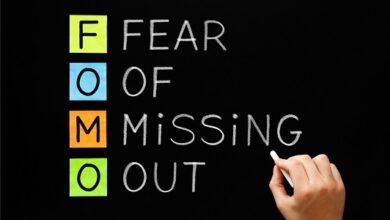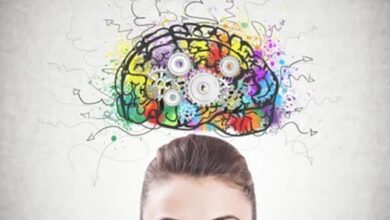The procedural or instrumental memory is storing procedures, skills or motor or cognitive skills that allow people to interact with the environment.
It is a type of long-term unconscious memory and reflects the way of doing things (motor skills). For example: writing, riding a bike, driving a car, playing an instrument, among others.
Generally, memory systems are divided into two types: declarative memory and non-declarative or implicit memory. The first is the one that stores information that can be communicated verbally, consisting of conscious learning.
On the other hand, the second type is a memory that is difficult to verbalize or transform into images. Inside it is procedural memory. This is activated when you need to perform a task, and learned functions are usually automated skills.
The main cerebral substrate of procedural memory is the striatum, basal ganglia, premotor cortex and cerebellum.
The development of procedural memory occurs to a greater extent in childhood. And it is continually modified by daily experiences and practices. It is true that in adulthood it is more complicated to acquire this type of skill than in childhood, as it requires extra effort.
Procedural memory concept
Procedural memory consists of habits, skills, and motor skills that the motor system acquires and incorporates into its own circuitry. For this type of memory to be acquired, it is necessary to perform several training tests that allow the skill to be automated.
Knowledge progresses unconsciously and is continually modulated by experience. Thus, they are adjusted throughout life for repeated practice.
In more advanced stages, practice makes cognitive or motor skills more accurate and faster. It becomes a habit, a behavior that runs automatically.
Types of procedural memory
There appear to be two types of procedural memory, with different major locations in the brain.
The first refers to the acquisition of habits and skills. That is, the ability to develop stereotyped behavioral repertoires such as writing, cooking, playing the piano… This type of procedural memory is about goal-directed behaviors and is housed in the striatum system of the brain.
The second is a much simpler system. It refers to specific sensorimotor adaptations, i.e. adjusting our reflexes or developing conditioned reflexes.
They are body adjustments, allowing the execution of fine and precise movements, in addition to conditioned reflexes. It is located in the cerebellar system.
How does procedural memory work?
Procedural memory begins to form as soon as you learn to walk, talk or eat. These skills are repeated and rooted to be done automatically. It is not necessary to consciously think about how to perform these motor activities.
It’s hard to pinpoint when you learned to perform these types of actions. They are usually learned during early childhood and continue to function unconsciously.
The acquisition of these skills requires training, although it is true that training does not always guarantee that the skill will be developed. We can say that procedural learning was acquired when behavior changes thanks to training.
Apparently, there are structures in our brain that control early learning of procedural memories, later learning, and automation.
brain substrate
When we learn a habit, an area of our brain called the basal ganglia is activated. The basal ganglia are subcortical structures that have multiple connections throughout the brain.
Specifically, they allow information to be exchanged between lower areas of the brain (such as the brainstem) and higher areas (such as the cortex).
This structure appears to play a selective role in the procedural learning of habits and skills. It also participates in other non-declarative memory systems such as classical or operant conditioning.
Within the basal ganglia, a region called the striatum nucleus excels in habit acquisition. It receives input from most of the cerebral cortex, as well as other parts of the basal ganglia.
The striatum is divided into the associative striatum and the sensorimotor striatum. Both have different roles in learning and automating skills.
First stages of procedural learning: associative striatum
When we are in the early stages of procedural learning, the associative striatum is activated. Interestingly, as the activity is training and learning, this area decreases its activity. So when we are learning to drive, the associative striatum is activated.
For example, in a study by Miyachi et al. (2002), it was verified that, if the associative striatum were temporarily inactivated, new sequences of movements could not be learned. However, subjects could execute already learned motor patterns.
Late stages of procedural learning: sensorimotor striatum
In later stages of procedural learning, another structure becomes active: the sensorimotor striatum. This area has an activity pattern opposite to the associative striatum, that is, it is activated when the skill has already been acquired and is automatic.
Thus, once the ability to drive has been sufficiently trained and is already automatic, the associative striatum reduces its activity while increasing the activation of the sensorimotor striatum.
Furthermore, it has been proven that a temporary blockage of the sensorimotor striatum prevents learned sequences from being executed. Although it does not stop learning new skills.
However, there appears to be one more step. It has been observed that when a task is already very well learned and automated, the sensorimotor striatum neurons also stop responding.
Cerebral cortex and procedural memory
What happens then? Apparently, when a behavior is learned very well, the cerebral cortex (cortex) is activated primarily. More specifically, the motor and pre-motor areas.
Although this also seems to depend on how complex the learned movement sequence is. Thus, if the movements are simple, the cortex is predominantly activated.
On the other hand, if the sequence is too complex, some neurons in the sensorimotor striatum remain activated. In addition to activating the motor and pre-motor regions of the cerebral cortex as support.
On the other hand, it has been shown that there is a decrease in the activity of the areas of the brain that control attention (prefrontal and parietal) when we perform highly automated tasks. While, as mentioned, activity increases in the motor and pre-motor areas.
Cerebellum and procedural memory
The cerebellum also appears to participate in procedural memory. Specifically, he participates in refining and making learned movements more accurate. That is, it gives us more agility in the execution of our motor skills.
In addition, it helps to learn new motor skills and consolidate them through the Purkinje cells.
Limbic system and procedural memory
As with other memory systems, the limbic system plays an important role in procedural learning. This is because it refers to processes of motivation and emotion.
For this reason, when we are motivated or interested in learning a task, we learn it more easily and it stays longer in our memory.
physiological mechanisms
It has been shown that when we acquire learning, the connections and structures of the neurons involved change.
Thus, through a series of processes, learned skills become part of long-term memory, reflected in the reorganization of neural circuits.
Certain synapses (connections between neurons) are strengthened and others weaken, while the dendritic spines of neurons change in size, enlarging.
On the other hand, the presence of dopamine is essential for procedural memory. Dopamine is a nervous system neurotransmitter that has multiple functions, including increasing motivation and a sense of reward. In addition to allowing movement and, of course, learning.
It mainly facilitates the learning that takes place thanks to rewards, for example, learning to press a certain button to get food.
Assessment
There are several tests with which to assess procedural memory capacity in humans. Studies often use these tests to compare performance between patients with memory problems and healthy people.
The most commonly used tasks to assess procedural memory are:
Probabilistic weather forecast task
In this task, procedural cognitive learning is measured. The participant receives four different types of cards, where different geometric figures appear. Each card represents a certain probability of rain or shine.
In the next step, the subject is presented with three grouped cards. He will have to find out if, by gathering the data, there is a greater chance of sun or rain.
After your answer, the examiner will tell you if the answer is correct or not. Therefore, the participant of each test gradually learns to identify which cards are more likely to be associated with sun or rain.
Patients with changes in the basal ganglia, such as those with Parkinson’s disease, gradually fail to learn this task, even if their explicit memory is intact.
Sequential reaction time test
This task assesses sequence learning. In it, visual stimuli are presented on a screen, usually letters (ABCD …). The participant is instructed to observe the position of one of them (eg, B).
The participant must press one of the four keys, depending on where the target stimulus is, as quickly as possible. The middle and left index fingers, and the right and middle index fingers are used.
At first, the positions are random, but in the next phase they follow a certain pattern. For example: DBCACBDCBA … Then, after several attempts, the patient must learn the necessary movements and automate them.
Rotary Chase task
This task is performed with a special device that has a rotating plate. On one part of the plate there is a metal spike. The participant must put a rod on the metal point for as long as possible, not forgetting that the plate makes circular movements that need to be followed.
mirror test
This task requires good hand-eye coordination. Assess ability to learn a specific motor skill, such as tracing the outline of a star. However, for this task, the participant can only see the reflection of the image he draws in the mirror.
In the beginning, errors are common, but after several repetitions, the movements are controlled by observing the hand itself and drawing in the mirror. In healthy patients, fewer and fewer mistakes are made.
Dream and procedural memory
It has been widely demonstrated that procedural memory is consolidated through an offline process. That is, we configure our instrumental memories in periods of rest between motor exercises, especially during sleep.
Thus, it was observed that motor tasks seem to improve markedly when evaluated after a rest interval.
This happens with any type of memory. After a period of practice, it has been found beneficial to rest so that what has been learned is corrected. These effects are enhanced if you rest right after the training period.
Procedural memory and awareness
Procedural memory has complex relationships with consciousness. Traditionally, we have referred to this type of memory as unconscious effortless memory.
However, experimental studies have proven that there is neuronal activation before there is a conscious planning of the movement to be performed.
That is, the conscious desire to perform a movement is really an “illusion”. In fact, according to different studies, sometimes “being aware” of our automatic movements can negatively affect task execution.
In this way, when we become aware of our sequence of movements, we sometimes perform worse and make more mistakes. Therefore, many authors emphasize above all that procedural memory, when it is already well established, does not require attention or supervision of the acts themselves in order to do them well.
Disorders that affect procedural memory
There is a set of cortical and subcortical structures that intervene in different functions of procedural memory. A selective lesion of any of them produces various disturbances in motor functions, such as paralysis, apraxia, ataxia, tremor, choreic movements or dystonia.
basal ganglia
Many studies have analyzed the pathologies that affect memory in order to know the types of existing memories and how they work.
In this case, the possible consequences of a malfunction of the basal ganglia or other structures on learning and task performance were examined.
For this, in the various studies different evaluation tests are used comparing healthy people and others with some impairment of procedural memory. Or, patients with impaired procedural memory and other patients with other impaired memory.
For example, in Parkinson’s disease, there is a deficit of dopamine in the striatum and performance abnormalities have been observed on certain memory tasks. There can also be problems in Huntington’s disease, where there is damage to the connections between the basal ganglia and the cerebral cortex.
Difficulties will also arise in patients with brain damage to some of the brain structures involved (eg those produced by a stroke).
However, today the exact role that the basal ganglia play in movement learning is somewhat controversial.
It was found that during motor learning, certain areas of the brain are activated in healthy participants. Some of these were the dorsolateral prefrontal cortex, the supplementary motor area, the anterior cingulate cortex… as well as the basal ganglia.
However, different areas (such as the cerebellum) were activated in Parkinson’s patients. Furthermore, the striatum and basal ganglia were inactive. It seems that compensation is given by the cortico-cerebellar system, as the cortico-striatal pathway is damaged.
In patients with this disease and Huntington’s disease, greater activation of the hippocampus and cortical-thalamic pathways was also observed.
In another study, they evaluated patients who had suffered a stroke that affected the basal ganglia and compared them with healthy participants.
They found that affected patients learn motor sequences more slowly, take longer to respond, and are less accurate than healthy participants.
Apparently, the explanations given by the authors are that these individuals have problems in dividing the motor sequence into organized and coordinated elements. Thus, their answers are disorganized and take longer to elaborate.




